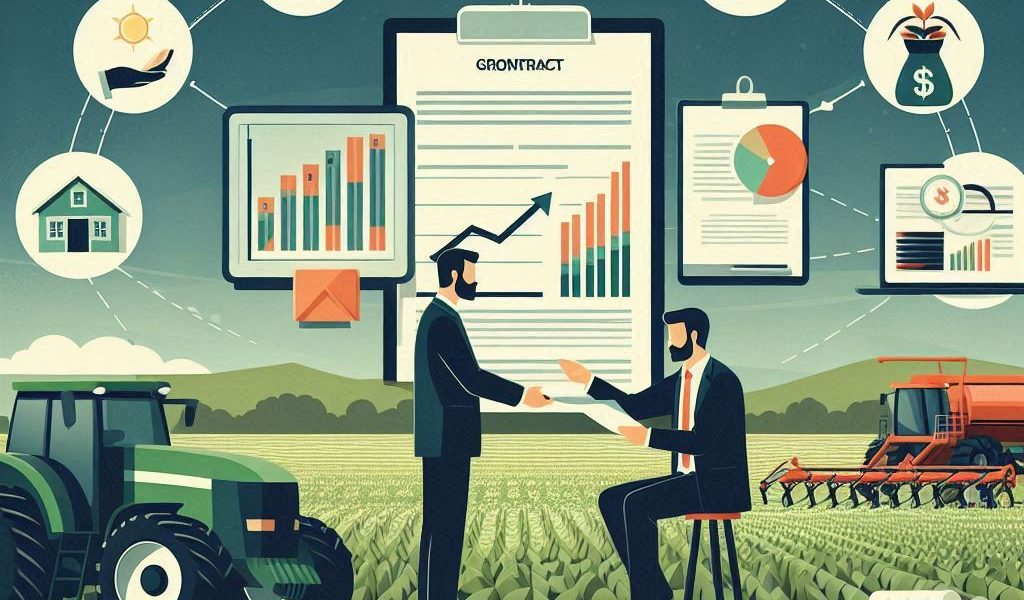The agricultural sector plays a pivotal role in sustaining the global food supply and economy. However, the challenges faced by farmers, from unpredictable weather patterns to rising operational costs, can make it difficult to maintain sustainable farming practices. Thankfully, government subsidies and grants provide crucial financial assistance to farmers, enabling them to grow their businesses, adopt modern farming techniques, and manage challenges more effectively.
In this blog, we will explore the various types of subsidies available to farmers, including agricultural loans, fertilizer grants, and equipment grants. Additionally, we will provide detailed guidance on how farmers can apply for these financial aids, ensuring that they have the resources needed to thrive.
What Are Subsidies for Farmers?
Government subsidies are financial aids provided to farmers to support agricultural production, improve farm productivity, and promote the sustainability of the agriculture sector. These subsidies aim to reduce the cost burden on farmers and encourage practices that enhance food security, environmental conservation, and economic growth.
In essence, agricultural subsidies cover various aspects of farming, including:
- Agricultural loans to support farm development or expansion.
- Fertilizer grants to provide affordable fertilizers for better crop yields.
- Equipment grants for acquiring modern machinery and tools to enhance productivity.
Subsidies can significantly lower the financial barriers faced by farmers, enabling them to make investments in their businesses, adopt sustainable practices, and increase overall productivity.
Types of Subsidies Available for Farmers
There are different types of subsidies that farmers can access to support their farming operations. Each subsidy targets a specific area of need, such as improving production capabilities, reducing operational costs, or adopting new technologies. Let’s take a closer look at the main types of subsidies available for farmers.
1. Agricultural Loans
Agricultural loans are a crucial form of financial aid for farmers. These loans are provided by government bodies or financial institutions with favorable interest rates and flexible repayment terms. The primary objective of agricultural loans is to support the development of agricultural businesses, helping farmers purchase land, seeds, equipment, and inputs for their crops.
Key Benefits of Agricultural Loans:
- Low Interest Rates: Government-backed agricultural loans typically offer lower interest rates compared to traditional loans, making them more affordable for farmers.
- Flexible Repayment Terms: Repayment schedules are often tailored to suit the seasonal nature of farming, with payments aligned to harvest cycles.
- Financial Flexibility: These loans can be used for various purposes, including land acquisition, irrigation systems, equipment purchases, and expansion of agricultural operations.
Farmers can apply for these loans through agricultural banks, rural development banks, and government loan schemes, depending on their location and needs.
2. Fertilizer Grants
Fertilizers are essential for enhancing soil fertility and boosting crop yields. However, the cost of purchasing fertilizers can be a significant financial burden for farmers, especially small-scale and subsistence farmers. Fertilizer grants are designed to make fertilizers more affordable by subsidizing the costs for farmers.
Key Benefits of Fertilizer Grants:
- Reduced Input Costs: By providing subsidies for fertilizers, governments help farmers reduce the financial strain of purchasing necessary inputs for crop production.
- Increased Crop Productivity: With access to affordable fertilizers, farmers can improve the quality and quantity of their crops, leading to better harvests and increased income.
- Sustainability: Fertilizer grants often encourage the use of environmentally sustainable fertilizers, which can enhance soil health and reduce harmful agricultural runoff.
Farmers can apply for these grants through agricultural extension offices or local government agencies, which often distribute subsidized fertilizers to farmers in need.
3. Equipment Grants
Modern farming requires advanced equipment and machinery to improve efficiency and productivity. However, purchasing new equipment can be prohibitively expensive, especially for small or medium-sized farms. Equipment grants aim to make it easier for farmers to access essential machinery, such as tractors, harvesters, irrigation systems, and other agricultural tools.
Key Benefits of Equipment Grants:
- Access to Advanced Technology: Farmers can upgrade their operations by acquiring modern, efficient equipment that enhances productivity.
- Lower Operational Costs: New equipment can reduce the time and labor required for farming tasks, leading to overall cost savings.
- Increased Yields: By investing in advanced technology, farmers can achieve higher yields, better crop quality, and more consistent production.
Governments typically offer these grants through agricultural development agencies, which may have specific eligibility criteria based on farm size, location, or the type of crop grown.
How to Apply for Agricultural Subsidies: A Step-by-Step Guide
While subsidies for farmers provide crucial financial support, the application process can sometimes be complex. To help you navigate this process, here’s a step-by-step guide to applying for agricultural subsidies.
Step 1: Identify the Available Subsidies
The first step in applying for subsidies is to identify the different grants and loans that are available in your country or region. Various government bodies, such as the Ministry of Agriculture, local development banks, and agricultural agencies, provide detailed information about available subsidies.
You can find information on government websites, agricultural offices, and through local agricultural organizations. Make sure to explore the eligibility criteria and determine which subsidies are applicable to your specific needs.
Step 2: Check Eligibility Criteria
Each subsidy program has specific eligibility criteria that farmers must meet in order to qualify. These criteria may include factors such as farm size, income level, crop type, and geographic location. For example, some grants may be available exclusively to small-scale farmers, while others may be targeted at farmers working in certain regions or growing specific crops.
Ensure that you meet all the eligibility requirements before applying for the subsidy. Some programs may require farmers to submit financial statements, tax records, or proof of farm ownership.
Step 3: Gather Necessary Documents
Once you’ve identified the subsidy and confirmed your eligibility, it’s time to gather the required documentation. Common documents needed for subsidy applications include:
- Proof of farm ownership or lease agreement.
- Financial records, including income statements and balance sheets.
- A business plan outlining how the funds will be used.
- Tax returns or registration documents for the farm.
- Certificates or licenses related to farming operations, such as pesticide licenses or organic certification.
Ensure that all documents are up-to-date and complete to avoid delays in the application process.
Step 4: Fill Out the Application Form
Most government subsidy programs require applicants to complete an official application form. This form will ask for basic details about your farm, the purpose of the subsidy, and how you intend to use the funds. Be clear and concise when filling out the application, as providing accurate information will help streamline the review process.
Step 5: Submit the Application
Once you’ve completed the application form and attached all required documents, submit your application to the relevant government agency or financial institution. Be sure to follow submission guidelines carefully, as missing or incorrect information can lead to delays or rejection.
Some subsidy programs may allow online submissions, while others may require in-person applications or mailed forms. Make sure to adhere to the deadlines to avoid missing out on available subsidies.
Step 6: Wait for Approval and Disbursement
After submitting your application, the review process will begin. The government agency or financial institution will assess your application and determine whether you qualify for the subsidy. If approved, the funds will be disbursed according to the terms of the subsidy program. The process may take anywhere from a few weeks to several months, depending on the complexity of the application.
Tips for Maximizing Your Chances of Approval
- Maintain Accurate Records: Ensure that all financial records, tax filings, and farm-related documents are accurate and up-to-date.
- Be Clear and Detailed: When filling out application forms, provide clear and detailed explanations of how the subsidy will benefit your farming operations.
- Consult Local Agricultural Offices: Local agricultural offices can provide valuable guidance on the application process and may offer assistance in completing forms or gathering required documentation.
Conclusion
Government subsidies are invaluable resources for farmers looking to improve their operations, increase productivity, and ensure the sustainability of their businesses. Whether you are seeking agricultural loans, fertilizer grants, or equipment subsidies, understanding the various types of financial aid available and the application process is crucial for success.
By utilizing these subsidies, farmers can gain the necessary financial support to overcome challenges, invest in modern farming techniques, and ultimately boost their productivity. If you are a farmer, take the time to explore the various subsidy programs available to you, and follow the application steps carefully to secure the funding you need for a prosperous farming future.




